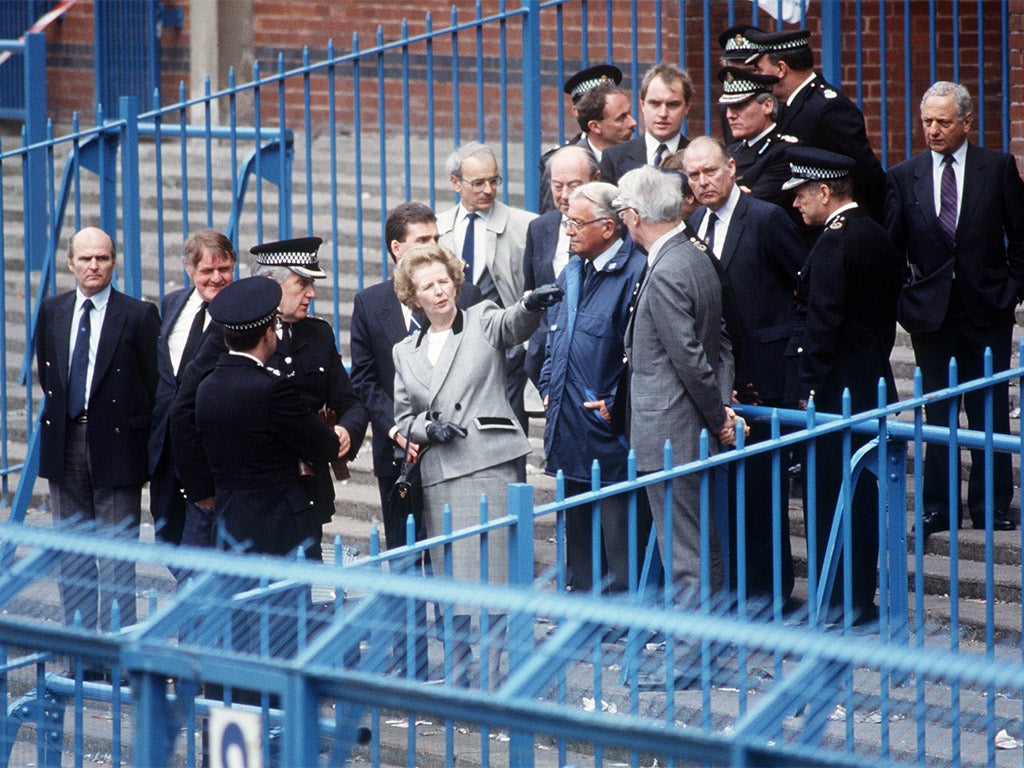Stadium trouble: For the non-footballing public, hooligans were always to blame

It is easily forgotten how large the figure of the football hooligan loomed in the public mind 23 years ago – or at least in the minds of those who never went to football matches and had difficulty understanding what enjoyment anyone else got from them.
By 1989, Margaret Thatcher had fought and won battles against unions, left-wing councillors, and the "wets" in her own party. The Falklands had been reclaimed, and the communist empire was disintegrating. There had not been an inner-city riot for four years. She was almost running out of enemies to fight, except for the football hooligan.
There certainly was a small number of thugs who went to matches with the sole intention of creating trouble. One particularly dreadful incident occurred at the Heysel Stadium, in Belgium, on 29 May 1985, four years before Hillsborough, when a group of Liverpool supporters smashed through barriers to attack supporters of the Italian team Juventus. A wall collapsed, and 39 people died.
Mrs Thatcher was, rightly, furious – as were Europe's football authorities, which banned all English clubs from European competition for five years, and Liverpool for seven.
In 1988, after Mrs Thatcher had heard reports of English fans going on the rampage in several German towns during the European Cup, she swallowed her long-standing aversion to Germany's Chancellor Helmut Kohl to take him aside at an international conference and give him her personal apology.
These incidents only reinforced her suspicion that wherever there was trouble of any kind at any football stadium, there must be hooligans. A terrible catastrophe occurred at Bradford's Valley Parade ground on 11 May 1985, just before the Heysel disaster, when a fire killed 55 spectators and injured 255. The club had been warned that their stands were a fire hazard.
Coincidentally, trouble arose on the same day at Birmingham City's ground, where a teenager was killed. This time hooligan violence genuinely was to blame.
Mrs Thatcher decided to set up one inquiry, headed by a High Court judge, Sir Oliver Popplewell, to cover both incidents.
Judge Popplewell eventually reported that the Bradford fire was entirely attributable to the design of the stadium, but his conclusion was drowned by the tidal wave of horror that followed Heysel.
The football hooligan had taken his place in the public consciousness. As the fans lay dying at Hillsborough, the police had a ready-made excuse.
Join our commenting forum
Join thought-provoking conversations, follow other Independent readers and see their replies
Comments